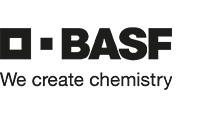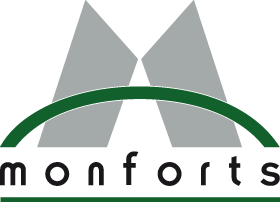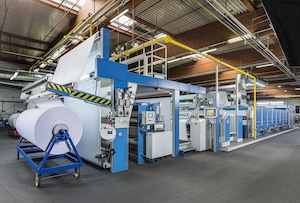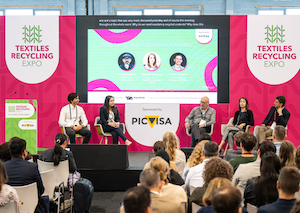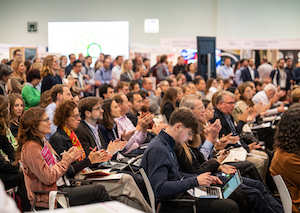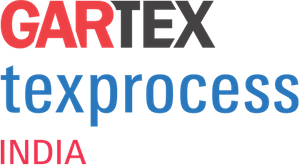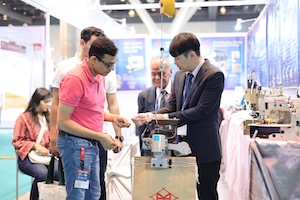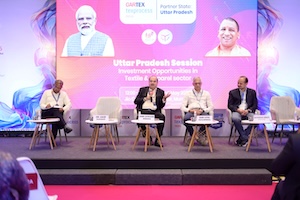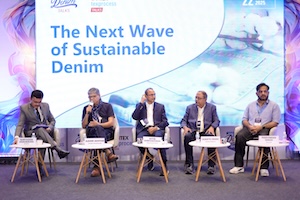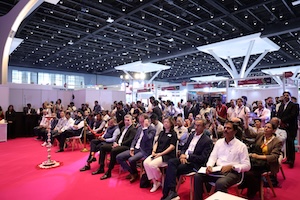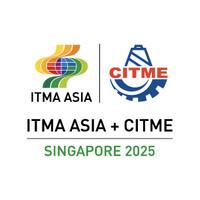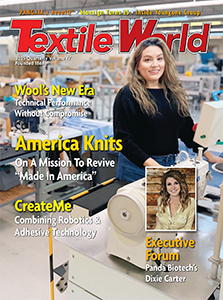 STAMFORD, CT — June 17, 2025 — At Paris Air Show today, Hexcel will spotlight its latest advancements in thermoplastic composite technology by showcasing a highly innovative PEKK/carbon thermoplastics component developed as part of the HELUES project.
STAMFORD, CT — June 17, 2025 — At Paris Air Show today, Hexcel will spotlight its latest advancements in thermoplastic composite technology by showcasing a highly innovative PEKK/carbon thermoplastics component developed as part of the HELUES project.
In 2018, Hexcel and Arkema have signed a strategic alliance to develop thermoplastic composite solutions for the aerospace sector combining the expertise of Hexcel in carbon fiber and that of Arkema in PEKK.
At the Paris Air Show, the HELUES project perfectly illustrates thermoplastic solutions with a new demonstrator, a complex structural component for an overwing emergency exit door, and is the result of a multi-partner collaboration aimed at revolutionizing how aerospace components are manufactured for the next generation of high-rate aircraft production.
“The HELUES demonstrator is a milestone in aerospace thermoplastic composites,” said Thierry Merlot, Hexcel President Aerospace Europe, Asia Pacific, Middle East, Africa & Industrial. “By eliminating autoclaves and enabling functional integration in a single step, thermoplastics are opening the door to truly scalable aircraft production.”
As global demand surges for more efficient and scalable aircraft manufacturing, particularly for single-aisle jets, Hexcel and its HELUES partners are helping OEMs address critical production challenges through new material and process innovations.
The HELUES project, funded by the Bavarian State Ministry of Economic Affairs and supported by the German Aerospace Centre, brought together Airbus Helicopters Deutschland GmbH, Neue Materialien Bayreuth GmbH, Siebenwurst GmbH & Co. KG, INCOE International Europe, ARKEMA and Hexcel to pioneer a new manufacturing process using high-temperature thermoplastics.
At the core of the HELUES technology is a one-step forming and injection overmolding technology that utilizes HexPly® unidirectional (UD) carbon fiber-reinforced Kepstan® PEKK tapes in conjunction with Kepstan® PEKK injection molding compounds. This integrated approach enables the rapid creation of a fully formed, structurally complex component, including reinforcing ribs and functional elements, in less than two minutes.
Thermoplastics technology offers aerospace OEMs three key advantages:
- Dramatically shortened cycle times – from hours to minutes – to meet production targets of up to 80-100 jets per month.
- Greater design flexibility and weight savings, thanks to thermoplastics’ ability to be reshaped and welded rather than fastened.
- Enhanced sustainability and recyclability, as thermoplastics can be reprocessed and reused
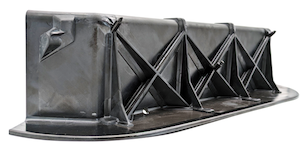 The HELUES demonstrator directly replaces a traditionally assembled door structure with a single, integrated part, reducing component count and assembly steps by up to 90%. Early-stage testing confirmed excellent material bonding between molded ribs and thermoformed laminates, even under complex process parameters, further supporting the part’s viability in demanding aerospace environments.
The HELUES demonstrator directly replaces a traditionally assembled door structure with a single, integrated part, reducing component count and assembly steps by up to 90%. Early-stage testing confirmed excellent material bonding between molded ribs and thermoformed laminates, even under complex process parameters, further supporting the part’s viability in demanding aerospace environments.
With the commercial aviation sector preparing for a future defined by high-rate production and more automated, sustainable assembly lines, thermoplastics are gaining momentum as a material of choice. By reducing reliance on energy-intensive autoclaves and enabling robotic manufacturing processes, solutions like the HELUES component demonstrate how composite innovation can unlock both performance and production scalability for the next generation of aircraft.
Posted: June 17, 2025
Source: Hexcel Corporation

